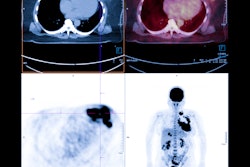
 Davin Korstjens of IMV Medical Information Division.
Davin Korstjens of IMV Medical Information Division.
Total nuclear medicine patient study volumes decreased by 5.7% between 2021 and 2023, with a 10.7% decrease in hospital-based studies and a 2.5% increase in nonhospital-based studies, according to the newly published IMV 2024 NM Market Outlook Report.
Two-year compound annual growth rates (CAGR) between 2021 and 2023 show an overall average 2.9% decrease in total procedures each year, with hospital-based procedures declining by 5.5% and non-hospital procedures increasing by 1.2%. Specifically considering cardiovascular nuclear medicine procedures, total procedures have decreased by 7.1% over the period for a two-year CAGR of -3.6%.
In 2023, there were an estimated total of 9.9 million nuclear medicine patient studies performed. Of these, 5.8 million were performed in hospital sites and 4.1 million in nonhospital sites.
| Changes in nuclear medicine procedure volumes between 2021 and 2023 | ||
|---|---|---|
| Facility Type | Volume change since 2021 | 2-year CAGR |
| Hospitals | -10.7% | -5.5% |
| Nonhospitals | 2.5% | 1.2% |
| Total | -5.7% | -2.9% |
According to the report, this year 14% of nuclear medicine sites are currently performing theranostics procedures, with the top two radiopharmaceuticals used being Y-90 microspheres and iodine-131.
Overall, 60% of nuclear medicine sites have a nuclear medicine physicist on staff and employed by the facility, while 40% of sites contract with consulting nuclear medicine physicists. Last year, there were an annual average of 350 nuclear medicine patient studies read per physician, with a low of 240 studies in hospitals with less than 200 beds to a high of 560 studies in hospitals with 400 beds or more.
In terms of physician specialties, 63% of sites have general radiologists that read nuclear medicine studies, 60% use cardiologists or nuclear cardiologists, and 44% have a nuclear medicine physician reading nuclear medicine studies. This year, 51% of sites have an average wait time for a nonemergency nuclear medicine imaging outpatient visit of one day or less, 35% of one to four days, and 13% of four or more days.
IMV also found that, compared with 2022, the total number of fixed nuclear medicine cameras decreased 11.5%, from 14,863 units in 2022 to 13,155 in 2024. It also reported that the top two priorities for nuclear medicine departments are to "improve patient satisfaction with their nuclear medicine experience" and to "satisfy the needs of referring physicians."




















